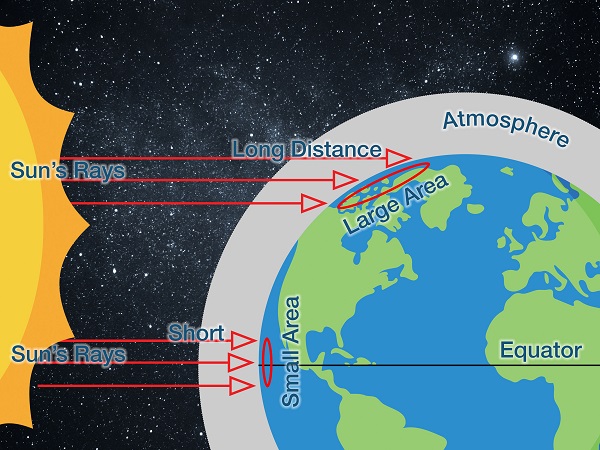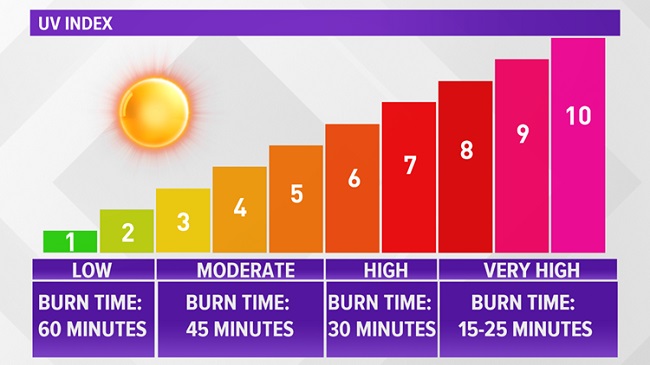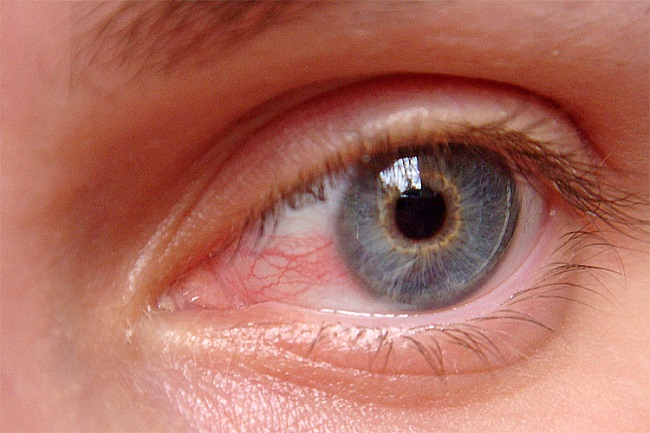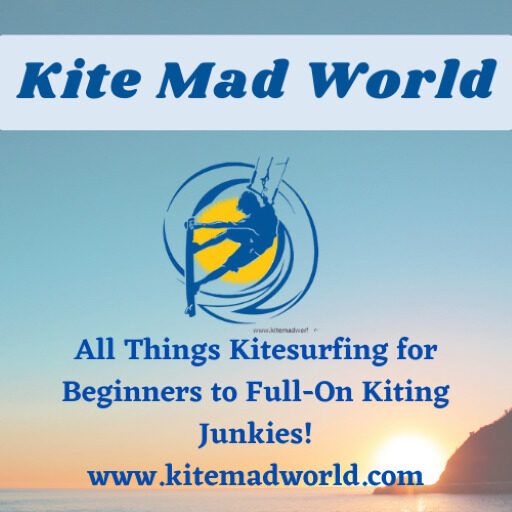The dangers of Ultra Violet (UV) radiation are now well-known. And we all love kiting in the sun right?! But it’s so easy to prevent UV ray damage by taking simple measures to protect ourselves that it’s crazy not to.
When I was a kid our parents didn’t know this stuff and we used to play in the sun all day with no sun protection. I’ve had a few nasty looking moles removed over the years, maybe as a result of this, maybe not. Fortunately none were malignant, but it’s made me wake up to the risks.
Do We Need Protection When it’s Cloudy?
This depends a lot on how cloudy and what type of cloud, as well as other atmospheric conditions such as ozone levels. UV light is not filtered by clouds, but the amount of UV reaching the Earth’s surface is dependent on these factors.
Even on a cloudy day, up to 80% of the sun’s damaging UV rays reach the Earth’s surface.
Where in the world you are also makes a difference as the angle of the sun’s rays hitting the atmosphere in high or low latitudes (furthest from the equator), particularly in the winter months, means that the rays pass through a deeper layer of atmosphere. This is because they’re travelling at a sharp angle rather than straight down.

The best measure of this is the UV Index. This was developed by the World Health Organisation and standardised across 417 countries, including the USA and Australia. It’s available from the main weather forecasting authority in each country, In the UK for example this is the Met Office.
The general rule of thumb is if it’s more than 3 then consider using protection, particularly if you have fair skin or are sensitive to the light. But this is for “normal” people, not us kitesurfers who are out on the water for hours at a time amongst all that reflected light.
Anything above 5 and we should all be using protection.

And the problem in countries like the UK is that the weather can change very quickly. I’m writing this article on a day in late September in the UK. This morning we had bright sunshine and temperatures over 20C degrees. And right now it’s raining.
As a matter of interest I’ve just checked the UV index. This morning it was 4 and now it’s 1. If I’d gone out kitesurfing in rain like now I wouldn’t have considered using sun protection. But if the weather had changed the other way round I’d be at reasonable risk of damage.
Of course most of me would’ve been covered by a wetsuit – but not my face and eyes.
Temperature has nothing to do with it either.
So the answer is to check the UV Index forecast, but if there’s a chance it’ll change while you’re out, slap on that sun-screen!
And as far as the eyes are concerned, if it’s light enough to wear sunglasses without impairing your visibility it makes sense to wear them.
UVA and UVB
The two types of UV that reach us are UVA and UVB. UVA has been proven to cause long term cell damage to the skin and eyes and is now linked to skin and eye cancer too. It’s the one that causes premature skin aging and wrinkling.
UVB is the one that causes sunburn and is directly the cause of skin cancer and eye damage.
So whatever we protect ourselves with has to be effective against both UV light risks.
UV Damage to Eyes
The problem for kitesurfers or any other water sport fanatic is that we are surrounded by highly reflective water. And as kitesurfers we are looking either up at the kite or at the water. So whatever UV light there is, there’s no hiding our eyes from it.
And whilst we won’t notice any damage at the time, the long term effects are proven causes of cataracts, macular degeneration and “Surfer’s Eye” or Pterygium.
Surfer’s Eye is a growth that forms on the white surface of the eye and can spread towards the iris and cause loss of vision or blurring. It’s actually the least worrying (although the most noticeable) risk but is linked to exposure to UV and wind or dust.

Suffice to say, you don’t want any of these things, especially as, with the right sunglasses it’s avoidable.
There are a number of major considerations when choosing the right sunglasses for any water sport, particularly kitesurfing. And in another article I explore these and make some recommendations.
UV Ray Damage to Skin
Rash Vests
It’s tempting to believe that the bit of our skin that’s covered by a rash vest is protected. But that’s not necessarily the case. When the lycra type material gets wet it’s quite possible for UV to get through, However, a decent quality rash vest often has an SPF rating, so that’s worth looking out for.
Personally though I tend to put sunscreen everywhere, even if I’m wearing a rash vest.
What Kind of Sunscreen?
There are a number of regulations governing what sunscreen manufacturers can now claim.
SPF is the major confusion – Basically it means Sun Protection Factor. If your skin would normally burn in 10 minutes of sun exposure then SPF 20 should mean you have 200 minutes of protection i.e. 20 x 10 minutes.
Where this fails though is that it’s based on a certain amount of the sunscreen being applied and doesn’t take into account how long it stays on. It doesn’t work if it’s not there!
And the other thing is that UVA doesn’t cause direct sunburn so isn’t taken into account in the SPF.
The other thing here is that you’d think that SPF40 would give double the protection of SPF20. But it doesn’t. Once you get to SPF35 you’ve got about 95% protection, and at SPF70 it’s 98%. Medical experts generally agree that SPF35 is sufficient for most people – as long as it stays on.
Broad Spectrum – Look for a sunscreen that has “broad spectrum” or UVA and UVB protection.
Chemical or Physical (also known as “Mineral”) – There are a number of chemical sunscreens, some of which advertise as “once a day”. P20 or P30 is the best known of these. The problem with these is that they contain a range of chemicals that are actually banned in other applications.
Firstly they can cause hormone imbalances, and secondly they are damaging to sea-life. The main culprit is a chemical called oxybenzone, but anything with “benzo” in the description should be avoided.
Physical or “mineral” sun-screens on the other hand place a physical barrier on the skin to reflect away the harmful rays. The main active ingredients are zinc-oxide or titanium-dioxide. Neither is harmful to us or the environment (as long as you don’t eat it).
Spray or Lotion – Whilst sprays can be convenient to reach those difficult bits, the problem is that it’s difficult to judge how much you’ve applied and whether you’ve covered everywhere. Another risk is that it’s easy to inhale them. And minerals that give us the skin protection can cause lung damage. So stick with creams. Lotions or sticks.
Water-Resistance – Manufacturers are no longer allowed to claim their product is waterproof. The maximum they are now allowed to claim is 80 minutes, so that’s the best you’ll see. Not very helpful for us kitesurfers! But the important thing here is to go for a sun-screen that’s been tested by water sports people and has at least 80 minutes protection.
Enjoy Yourself!
Come on cheer up! I know all this sounds a bit kill-joy, but it really isn’t. We’re in the great position now to know about the risks and fortunately there are great products out there so that we can go out and totally enjoy the sunshine and howling wind and still be safe. We just need to use them.
Ride hard and be safe! And let me know whether this has been helpful.


